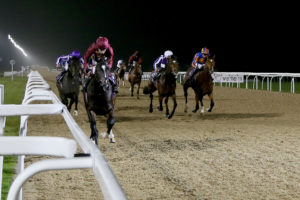You have to hand it to British racing. It may be starved of the prize-money levels seen in other jurisdictions, but that inescapable fact never seems to dampen demand at the yearling sales.
Of course a big part of the reason why yearling sales go from strength to strength in Europe is the participation of the big ownership groups from the Gulf states. Why else would the metrics seen at the yearling sales in Australia and Britain – where prize-money levels are on completely different scales – be almost identical?
The average yearling in Europe in 2019 sold for £60,096, compared to £55,787 in Australia. Moreover, the elite end of both markets also exhibit broadly similar profiles, with the top 10% averaging 3.7 times the overall average in Europe and 3.3 times in Australia.
As long as Europe’s elite owners continue to value prestige above prize-money, it’s hard to see the situation changing anytime soon.
Because of the egalitarian nature of Australia’s set-up, it’s also true that there is less of a cliff edge between the elite and middle markets – good returns are more evenly distributed among the top 50% of the market in Australia than in Europe.
But there is precious little difference at the lower end, where the bottom 10% of yearling purchases in Europe average 0.14 times the overall average, compared to 0.13 times in Australia.
If you are a commercial breeder in Europe, there is very little to complain about as bloodstock markets go. European yearling sales have posted their best ever figures in 2019. The overall average of £60,096 is 6.6% ahead of last year’s figure – and that was also a record.
The median price has reached £22,000 for the first time in history and there were significant gains at all levels of the market.
The average price for elite yearlings – the top 10% which numbers about 525 this year – rose to a record £224,165, well ahead of the £207,669 recorded in 2018. And just to put this average in perspective, it is well clear of the £168,217 posted as recently as 2015.

The Dubawi half-brother to Barney Roy who topped this year’s Book 1 auction – Photo: Tattersalls/Laura Green
We can also see the same pattern throughout all sectors of the market as each and every decile (10% segment) showed a significant improvement on the year before.
There were also more £500k-plus yearlings in 2019 than ever before. Perhaps it’s no surprise to see the yearling market advance in such a way. After all, all of the powerful ownership groups participated fully at all the major sales and there were also record numbers of yearlings bought by American interests.
But as night follows day, stallion farms will always seek to participate fully in rising markets. Yes, stud fees are on the increase and have been for a few years now.
The 2019 Return of Mares tells us that 5,398 mares were covered by stallions standing for advertised fees of at least £20,000 or €20,000. That number was up from 5,034 in 2018 and 4,634 in 2017.
In fact, it is close to 1,000 more mares than as recently as four years ago and 2,000 more than six years ago. Average book sizes have not altered drastically in the period, so it’s down to the number of more expensive stallions on offer in recent years – there were 40 advertised standing for at least 20k in 2019 compared to only 26 in 2013.
Higher fixed costs can put the brake on any rising market and bloodstock is no exception. Four years ago, in 2015, the £20k+ group of stallions were responsible for 770 of the yearlings sold in Europe, compared to 1,641 yearlings this year. Back in 2015, 462 (60%) made their advertised fee back, plus £20k.
This time around, 867 made their conception fee, plus £20k. That represents only 53% of yearlings by the most expensive stallions making a profit despite nearly doubling the number sold. The corresponding figures for 12 months ago were 823 profitable yearlings from 1,458 sales, or 56%.
Clearly, rising markets are not the only important barometers to the health of our bloodstock industry.



